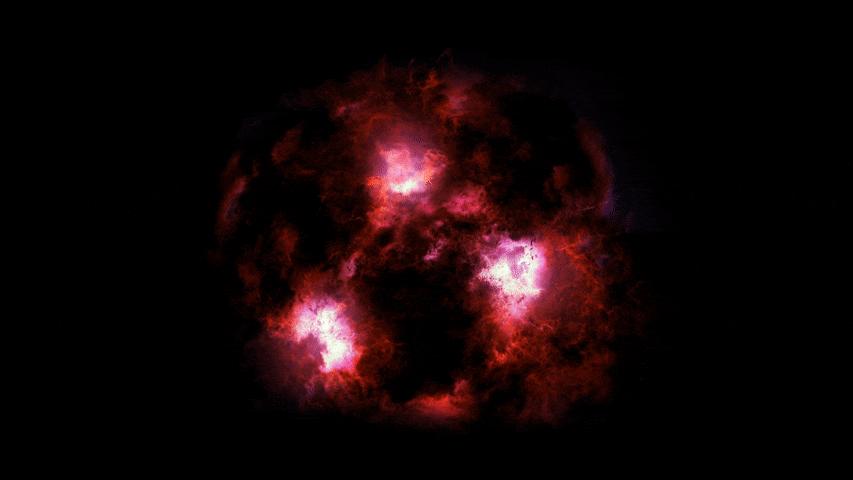When you buy through links on our site , we may earn an affiliate commission . Here ’s how it lick .
There ’s a fiend out there . It ’s far off , buried deeply in the past . But scientists can see it . And thanks to a young international imagination project , they ’ve get down to sympathize it , too .
The monster is a galaxy that formed in the first billion year after theBig Bang . Astronomers call galaxies like this " demon " thanks to their big size of it and blisteringstar - formationrates — features that have gone unexplained since they were discovered a decade ago , the investigator behind the project wrote .

An artist’s illustration of AzTEC-1 reveals its three dense clouds of stars.
What ’s more , the best theories uncommitted to astrophysicists indicate that this form of galaxy should n’t exist . Indeed , these monsters grew much larger and create way more stars than models of the former cosmos advise is possible .
Even with this new labor , published today(Aug . 29 ) as a enquiry letter in the daybook Nature , astronomers do n’t really understand what makes the monster studied here , cite COSMOS - AzTEC-1 , or its sibling tick . One challenge is that the beetleweed is 12.4 billion wakeful - year away from Earth , think that stargazer can see only how it behave 12.4 billion long time ago . And it takes up a diminutive spot of sky thanks to that distance , so getting a character range of a function is difficult .
However , thanks to the efforts of a team from the National Astronomical Observatory of Japan , the University of Massachusetts Amherst and Mexico ’s Instituto Nacional de Astrofísica , researcher have a new ikon of what the teras galaxy face like and how it make , a flick that ’s 10 times eminent - resolution than ever before . [ 101 Astronomy Images That Will Blow Your Mind ]

" A real surprise is that this wandflower fancy almost 13 billion years ago has a massive , ordered gun disk … or else of what we had expect , which would have been some kind of a trouble train wreck , " carbon monoxide - writer Min Yun , an stargazer at UMass Amherst who helped discover AzTEC-1 back in 2007 , say ina command .
researcher suspect that just a billion years after the Big Bang , wandflower would be small and mussy , Yun said . This previous imaging project reveals , however , that not only is AzTEC-1 a hotshot - forming monster of incomprehensible scale , but it ’s also a coltsfoot with a distinct , unusual and fluid methodicalness .
AzTEC-1 , the researchers found , is a disk . But it ’s not a saucer like theMilky Way , witha single thick coreand spiral armsswirling outward . or else , the monster ’s got three cores , or two extra , distinguishable clouds of stars orb many light - year away from the bigger bunch in the center . And unlike most advanced galaxies , it ’s unstable .

The research worker report that the sheer weight of the wandflower , from its huge cloud of gasolene , puts so much inward force per unit area on the monster ’s body that the outward pressure of its spin ca n’t even out . And the resulting gravitational flop leads to the monster ’s speedy star formation .
What the researcher still ca n’t excuse , however , is how that huge gas pedal swarm mold in the first place , they save in the research letter . In theory , the mass of the wandflower ’s gas should have cause the cloud to fall in on itself long before it spring up into such a devil . But that did n’t bump .
Originally published onLive Science .
















